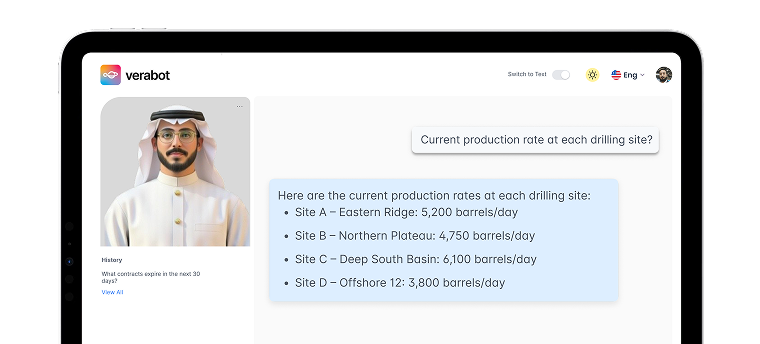Services -> Cyber Security Managed Services -> Security Awareness Training
Make Inroads for Building a Security-First Organization
Ongoing security awareness training empowers employees to recognize and respond to threats effectively. By investing in training programs, organizations can cultivate a security-first culture.
Fortify Digital Systems
$266B
is the projected market size of global cybersecurity industry by 2027, fueled by the rising demand for secure digital transformation.$10.5T
is the forecasted cost of cybercrime by the end of 2025, a staggering jump from $3 trillion in 2015.91%
of organizations encountered at least one cyber incident last year, with 56% facing significant business impacts.What You Can Do
Overcoming the Challenge of Role-Relevant Security Training
Organizations often struggle to make security training applicable to diverse roles. Tailoring content to each department’s specific risks enhances engagement and equips employees with context-specific threat recognition skills.
Battling Sophisticated Phishing Techniques in Employee Training
As phishing threats evolve, educating employees about current tactics can be daunting. Regular, realistic phishing simulations prepare staff to identify subtle red flags, fostering proactive reporting of potential attacks.
Maintaining Long-Term Engagement with Security Awareness Initiatives
Security awareness can fade over time without consistent reinforcement. By delivering fresh, engaging updates, organizations can keep security top of mind and inspire ongoing vigilance among all team members.
Building Confidence in Threat Response Protocols Across Teams
Recognizing a threat is only half the battle; employees must feel prepared to respond effectively. Regular drills and clear guidance on response protocols boost confidence and readiness across departments.
Technical Capabilities
Tailored Training Programs
Customize sessions for various roles to enhance threat recognition. Providing targeted training fosters a proactive mindset among employees.
Phishing Simulations
Conduct realistic exercises to educate users about phishing threats. This hands-on approach prepares employees to identify and report suspicious activities.
Ongoing Awareness Campaigns
Share regular updates and tips to reinforce a security-first mindset. Continuous engagement keeps security top of mind for all employees.
Our Partnerships





Growth Recognition




See How Organizations Are Innovating
Situation
CCC Group faced challenges in managing consistent security training and communication across its 800 global stores. Fragmented communication channels limited operational efficiency and made it difficult to keep employees engaged and up-to-date on security protocols.Solution
CCC adopted Microsoft Teams, and embraced centralize security awareness training, improved communication, and drive regular security updates. Power BI dashboards offered real-time insights, while targeted awareness campaigns reinforced a security-first mindset among employees.Impact
With Teams, CCC saved 300,000 hours annually and reduced paper costs by $500,000. The enhanced security awareness training empowered employees to identify threats, reinforcing proactive security practices and building a unified, security-conscious culture across its global retail network.Situation
Mitsubishi Tanabe Pharma aimed to enhance cloud security as part of its VISION 30 plan. With increased data utilization across departments, ensuring robust cloud security while managing resources was essential, especially as cloud adoption demanded unique security models like Zero Trust.Solution
Mitsubishi Tanabe integrated Microsoft Defender for Cloud, Microsoft Sentinel, and Azure OpenAI for seamless cloud security. These tools enabled proactive monitoring, automated translation of alerts, and in-depth security literacy training. Azure Logic Apps and AI-based summaries streamlined understanding of security incidents in real-time.Impact
Azure OpenAI integration cut incident response time by 90%, saving 550 hours annually. Translations in Japanese improved security literacy, empowering employees to handle alerts effectively. The enhanced system reinforced security protocols across departments, supporting Mitsubishi Tanabe’s vision for a safer, efficient cloud environment.Generating Business Value Across Functions
Role-Specific Security Training for Enhanced Threat Recognition
Provides customized security training aligned with each employee’s responsibilities, enhancing relevance and engagement. This tailored approach equips staff with skills specific to their role's security risks.
Realistic Phishing Simulations to Strengthen Vigilance
Conducts hands-on phishing exercises that mimic real-world threats, helping employees recognize and report suspicious activity. This builds practical awareness and improves response times against phishing attacks.
Continuous Security Awareness Campaigns to Sustain Readiness
Delivers regular updates, tips, and best practices to keep cybersecurity awareness alive across the organization. Ongoing engagement ensures employees remain proactive in recognizing emerging threats.
Compliance-Driven Training to Meet Industry Standards
Ensures security training is aligned with regulatory requirements, helping organizations meet industry compliance and data protection standards. Tailored content addresses specific guidelines for regulatory peace of mind.
Incident Response Protocols for Immediate Threat Action
Equips employees with clear response procedures during cyber incidents. This proactive approach reduces response time and potential impacts by ensuring everyone knows their role in safeguarding the organization.
Tracking and Reporting for Continuous Security Improvement
Monitors employee participation and performance in training sessions, enabling insights into strengths and gaps. This data-driven approach informs future training and reinforces an organization-wide security culture.






